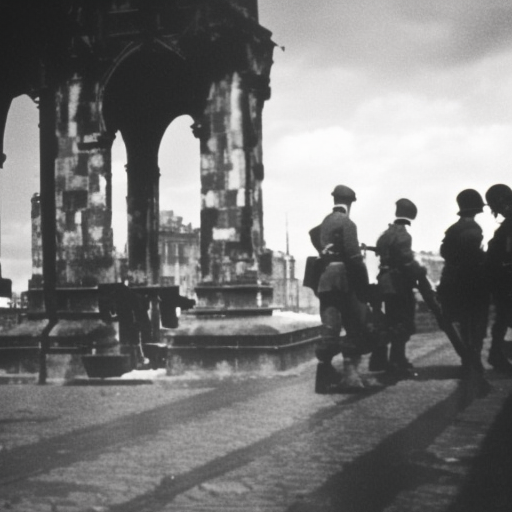Summary:
The Warsaw Uprising was a major military operation undertaken by the Polish resistance during World War II in an attempt to liberate Warsaw from German occupation. The uprising began on August 1, 1944, and lasted for 63 days before being brutally suppressed by the German forces. Despite the ultimate failure of the uprising, it remains a symbol of Polish resistance and courage.
Background:
By 1944, Poland had been under German occupation for almost five years. The Polish resistance, known as the Home Army, had been preparing for an uprising to coincide with the arrival of the Soviet Red Army. However, the Soviet advance was delayed, and the Home Army decided to proceed with the uprising on its own.
The Uprising:
On August 1, 1944, the Home Army launched the Warsaw Uprising. Thousands of fighters, mostly young men and women, took to the streets to fight against the German forces. The initial phase of the uprising saw the Polish resistance gain control of large parts of the city, including key buildings and strategic points.
German Response:
The German forces, led by General Erich von dem Bach-Zelewski, responded to the uprising with brutal force. They launched a counteroffensive and quickly regained control of the city. The German troops used heavy artillery, tanks, and air support to crush the resistance. They also carried out mass executions and destroyed entire neighborhoods in retaliation.
Conditions in Warsaw:
During the uprising, the people of Warsaw faced unimaginable hardships. The city was reduced to rubble, and the civilian population suffered from hunger, disease, and constant bombardment. The lack of outside support and supplies made the situation even more desperate.
International Response:
The Warsaw Uprising received little support from the Allies, who were focused on the larger strategic objectives of defeating Germany. Despite appeals for assistance, the Home Army received only limited aid in the form of airdrops. The Soviet Red Army, which was stationed just outside Warsaw, also did not intervene to support the uprising.
Aftermath:
The Warsaw Uprising officially ended on October 2, 1944, when the remaining resistance fighters surrendered. The German forces systematically destroyed what was left of the city, leaving Warsaw in ruins. An estimated 200,000 civilians and 18,000 resistance fighters lost their lives during the uprising.
Legacy:
The Warsaw Uprising remains a symbol of Polish resistance and bravery. It is seen as a testament to the indomitable spirit of the Polish people in the face of overwhelming odds. The uprising also highlighted the complex political dynamics of World War II, with the Soviet Union’s failure to support the Polish resistance becoming a source of deep resentment.
Conclusion:
The Warsaw Uprising was a courageous but ultimately unsuccessful attempt by the Polish resistance to liberate their capital from German occupation. The brutal response of the German forces and the lack of support from the Allies and the Soviet Union contributed to the tragic outcome. However, the legacy of the uprising lives on as a symbol of Polish resilience and determination in the face of adversity.












